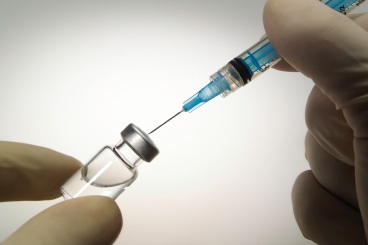An acute viral disease of the central nervous system, rabies is usually fatal. Normally, dogs, cats, jackals and wolves are carriers of the disease, which is transmitted to human beings if they are bitten or even licked by a rabid animal.

Rabies [Illustration by Shinod AP]
But the quantity of virus present in the saliva of a rabid animal may vary. That is why only 50 per cent of bites by rabid animals result in rabies.
The amount of time the rabies virus stays in the human body varies. Though, it is commonly between three to eight weeks following exposure, a lot of people continue to carry it for many years.
Symptoms
The disease begins with a headache, listlessness, sore throat and slight fever lasting for three to four days. The site of the bite will be painful and you may feel a tingling sensation.
The virus affects the nervous system gradually. First the sensory system gets affected, then the motor system, then the sympathetic and mental system. The patient cannot tolerate noise, bright lights or cold air. S/he develops a fear of air, which is demonstrated with muscle spasms.
Besides, the fear of death triggers angry outbursts, irritability and depression. The patient may lose a lot of fluids with perspiration, salivation and watering of the eyes. Gradually, s/he will have trouble swallowing liquids.
The mere sight or sound of water may provoke muscle spasms in the neck and the throat. This is a characterstic symptom of hydrophobia (fear of water). The patient may also become paralytic or slip into a coma.
Treatment:
There is no specific treatment for rabies. The doctor will suggest isolating the patient in a quiet room which is protected from bright light, noise and cold air.
The prescription will contain a lot of sedatives to relieve anxiety and pain. Besides, the doctor will ask you to monitor the patient’s fluid intake and urine output. Such patients are often put into intensive care and their respiratory and cardiac systems are constantly monitored.
Prevention and treatment:
Before the bite: People who deal with the infection, such as laboratory staff, veterinarians and forest officers, run a high risk of contracting the disease due to repeated exposure. They should be immunised with three doses of the vaccine.
After bite treatment: The aim of the treatment should be to neutralise the inoculated virus before it can enter the nervous system. Irrespective of the severity of the wound, every bite should be regarded as an emergency.
After bite treatment of vaccinated persons: If a vaccinated person gets bitten by a rabid animal, his present dose of vaccine will depend on the severity of the bite and the amount of rabies antibodies present in his blood.
Local treatment of the wound: The purpose of local treatment of all bite wounds is to remove as much virus as possible from the site of inoculation, before it can be absorbed by the nerve endings.
Cleansing: Wash the wound and scratches with plenty of soap and water, preferrably under running water for at least five minutes.
Chemical treatment: Whatever residual virus remains in the wound after washing, should be inactivated by antivirus solutions like alcohol, tincture iodine or providone iodine.
Suturing: Bite wounds should not be sutured immediately to prevent the spread of the virus to deeper tissues. Your health expert will recommend an anti-rabies serum, if suturing is required and can be done after 24 to 48 hours.
Antibiotic and antitetanus are sometimes used as preventives.
Besides the above, it is necessary to observe the animal for 10 days to see if it shows any signs of rabies or dies within 10 days.
Immunisation:
The aim of vaccination is to produce an immune status as quickly as possible so that the virus will not become established in the peripheral nerves from where it will travel to the central nervous system.
Rabies vaccine is unique because this is the only vaccine which can be given after exposure to the infection. The vaccination schedule consists of six doses on days 0, 3, 7, 14 and 30.
Duration of immunity:The process of developing immunity starts seven days after the anti-rabies vaccination and goes on till 30 days. The protection lasts for about six months from the date of completion of the course.
Advice to the patient undergoing anti-rabies treatment: Abstain from alcohol for a month after completing antirabies treatment. Avoid undue physical and mental stress and strain. Do not use steroids.










